Paleontology
-
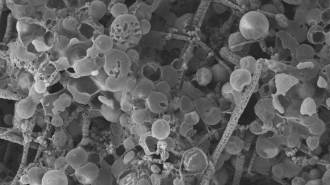 Earth
EarthFossil mimics may be more common in ancient rocks than actual fossils
Evidence of early life may be harder to preserve than pseudofossils — structures that form abiotically but resemble living remnants.
-
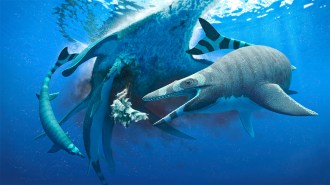 Paleontology
PaleontologyThis ancient sea reptile had a slicing bite like no other
Right up until 66 million years ago, the sea was a teeming evolutionary laboratory with a small, agile, razor-toothed mosasaur patrolling the waters.
By Jake Buehler -
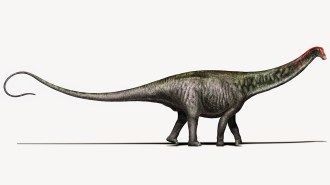 Animals
Animals50 years ago, scientists made the case for a landlubbing Brontosaurus
In 1971, a scientist argued for a landbound Brontosaurus instead of a swampy swimmer. Recent evidence comes from studies of its ancient environment.
-
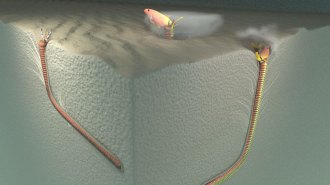 Life
LifeGiant worms may have burrowed into the ancient seafloor to ambush prey
20-million-year-old tunnels unearthed in Taiwan may have been home to creatures that ambushed prey similar to today’s monstrous bobbit worms.
-
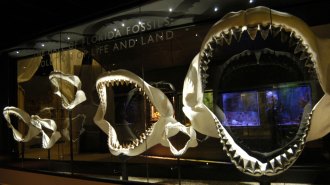 Paleontology
PaleontologyNewborn megalodon sharks were larger than most adult humans
Preserved pieces of backbone suggest that megalodon sharks were about 2 meters long at birth.
-
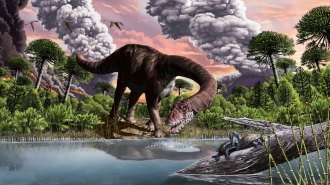 Paleontology
PaleontologyHow massive long-necked dinosaurs rose to rule the Jurassic herbivores
New dinosaur fossil dates to same time as a volcanic surge, suggesting ensuing changes in plant life allowed these long-necked giants to emerge.
-
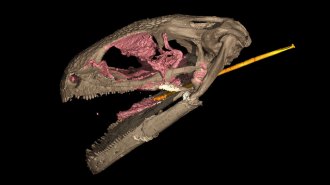 Life
LifeAn ancient amphibian is the oldest known animal with a slingshot tongue
A tiny amphibian that lived 99 million years ago waited for invertebrate prey before snatching them with a swift, shooting tongue.
-
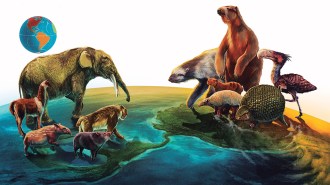 Paleontology
PaleontologyWhy South America’s ancient mammals may have lost out to northern counterparts
When North and South America joined millions of years ago, mammals from the north fared better in the meetup. Extinctions in the south may be why.
By Jake Buehler -
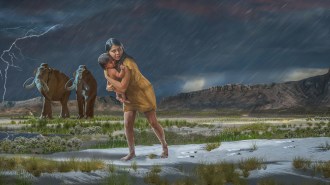 Humans
HumansThe longest trail of fossilized human footprints hints at a risky Ice Age trek
Researchers have discovered the world's longest trail of fossilized human footprints at White Sands National Park, New Mexico.
-
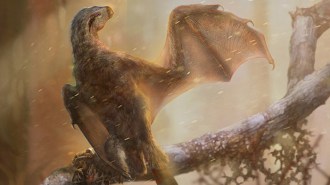 Paleontology
PaleontologyBat-winged dinosaurs were clumsy fliers
The two known species of bat-winged dinosaurs were a dead end when it comes to the evolution of bird flight, a new study finds.
-
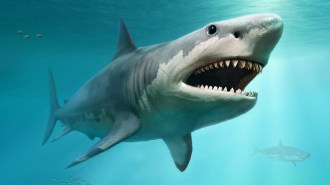 Paleontology
PaleontologyCannibalism in the womb may have helped megalodon sharks become giants
The ancient sea terror Otodus megalodon may have grown to at least 14 meters long thanks to a firstborn pup’s predatory behavior, some researchers say.
-
 Animals
AnimalsA tiny crustacean fossil contains roughly 100-million-year-old giant sperm
Giant sperm preserved in an ancient ostracod may be the oldest known sperm fossil, showing that giant sperm have existed at least 100 million years.